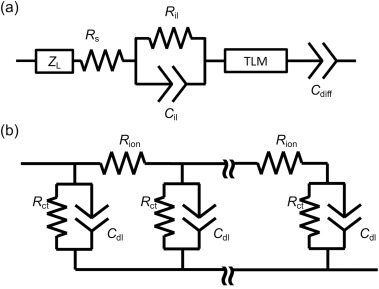Journal of Power Sources ( IF 9.2 ) Pub Date : 2018-09-14 , DOI: 10.1016/j.jpowsour.2018.09.014 Hiroki Nara , Daikichi Mukoyama , Ryo Shimizu , Toshiyuki Momma , Tetsuya Osaka

|
Lithium-ion batteries are required to have high-power density, that is to reduce impedance, for use in electric vehicles. This paper focuses on interfacial resistance between the cathode layer (CL) and the current collector (CC) observed at high frequencies, which is generally attributed to a resistance of surface film like SEI. To investigate the interfacial resistance systematically, different interfaces between the CL and the CC were prepared by controlling the press rate for the cathode preparation, or by introducing a carbon under-coating layer (CUL), followed by electrochemical impedance spectroscopy (EIS). The interfacial resistance between the CL and the CC prepared with an insufficient press rate or without a CUL was extremely high for the entire cathode. From the cathode cross-sectional observation, it was observed that this high interfacial resistance was caused by low contact rate at the interface. Using a pouch-type symmetric cell, EIS revealed that the interfacial resistance is attributed to electric resistance, that is, contact resistance at the interface. Also, the other resistances were attributed to be the ionic resistance of the electrolyte and pores in the cathode, and the charge transfer resistance of the cathode. Furthermore, the effectiveness of the CUL was shown to decrease the cathode impedance.
中文翻译:

电化学阻抗谱法系统分析锂离子电池正极层与集电器之间的界面电阻
锂离子电池需要具有高功率密度,即降低阻抗,以用于电动汽车。本文着重研究在高频下观察到的阴极层(CL)和集电器(CC)之间的界面电阻,这通常归因于表面膜的电阻,例如SEI。为了系统地研究界面电阻,通过控制阴极制备的压制速率,或通过引入碳底涂层(CUL),然后进行电化学阻抗谱(EIS),来制备CL和CC之间的不同界面。对于整个阴极,在压制速率不足或没有CUL的情况下制备的CL和CC之间的界面电阻极高。从阴极截面观察,观察到这种高的界面电阻是由界面处的低接触速率引起的。使用袋型对称电池,EIS显示界面电阻归因于电阻,即界面处的接触电阻。同样,其他电阻归因于电解质的离子电阻和阴极中的孔,以及阴极的电荷转移电阻。此外,CUL的有效性已显示出可降低阴极阻抗。其他电阻归因于电解液的离子电阻和阴极中的孔,以及阴极的电荷转移电阻。此外,CUL的有效性已显示出可降低阴极阻抗。其他电阻归因于电解液的离子电阻和阴极中的孔,以及阴极的电荷转移电阻。此外,CUL的有效性已显示出可降低阴极阻抗。



























 京公网安备 11010802027423号
京公网安备 11010802027423号